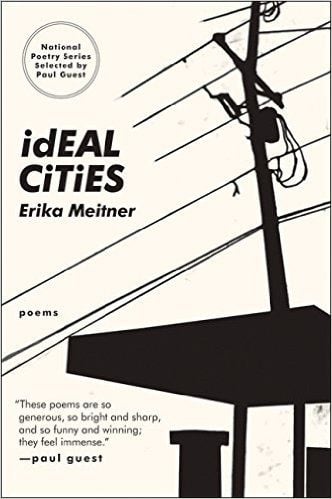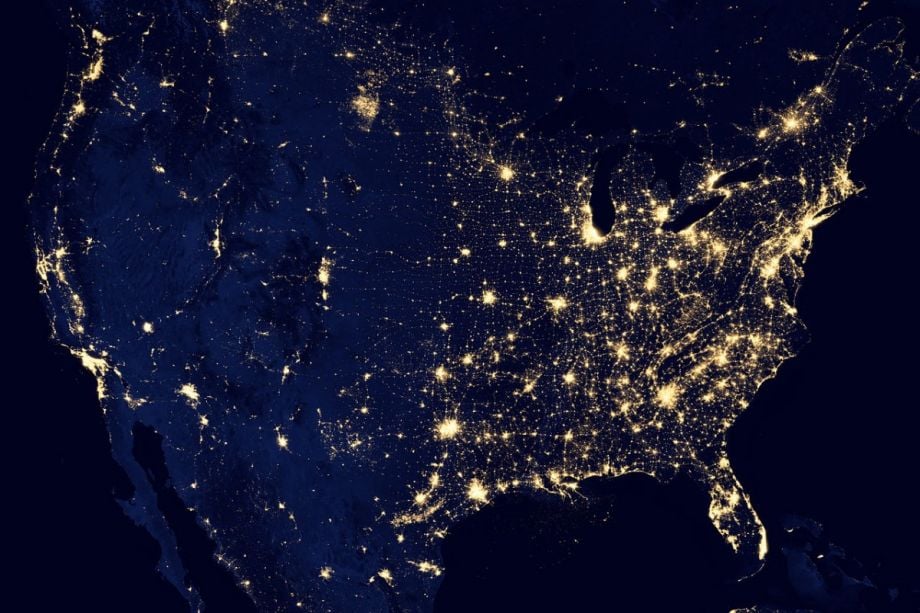There are times when the best way to talk about a city is in the heightened language of poetry. What follows is a short list of the best lyric writing about cities, where the language itself is afire and the truth of a place is revealed in a style that straightforward prose can’t quite achieve. From Chicago to Gulfport, Detroit to New York, these collections vivify the urban landscape.
Chicago Poems by Carl Sandburg
Claim to fame: This is the book that first dubbed Chicago the “City of Big Shoulders.”
Excerpt from “Chicago”
They tell me you are wicked and I believe them, for I have seen your painted women under the gas lamps luring the farm boys.
And they tell me you are crooked and I answer: Yes, it is true I have seen the gunman kill and go free to kill again.
And they tell me you are brutal and my reply is: On the faces of women and children I have seen the marks of wanton hunger.
And having answered so I turn once more to those who sneer at this my city, and I give them back the sneer and say to them:
Come and show me another city with lifted head singing so proud to be alive and coarse and strong and cunning.
This 1916 collection, written only a few years after Sandburg moved to Chicago from Milwaukee, put him on the literary map. Nearly a century after publication, its blend of plain speech and soulful insight feels relevant today. These short free-verse lyrics drill into the experience of war, immigration, industry and agriculture in a city that was the central hub for everything from American meat production to railroads to the U.S. Postal Service. But despite the grand landscape evoked in the title, these poems are also searingly introspective. Sandburg evokes the feeling of the citizen in public space, at once inside and outside the heart of the city. Among his most famous pieces collected here: “Fog.” (Remember those “little cat feet”?)
Native Guard by Natasha Trethewey
Claim to fame: Winner of the 2007 Pulitzer Prize
Excerpt from “Elegy for the Native Guards”
We leave Gulfport at noon; gulls overhead
trailing the boat—streamers, noisy fanfare—
all the way to Ship Island. What we see
first is the fort, its roof of grass, a lee—
half reminder of the men who served there—
a weathered monument to some of the dead.
A native of Gulfport, Mississippi, and a former U.S. poet laureate, Trethewey’s third book is dedicated to the merging of her personal history with American history. The title evokes the Louisiana Native Guards, a Union regiment during the Civil War made up of newly freed slaves that served on a fort just off the coast of Gulfport. They were assigned to guard Confederate prisoners of war. As a child, Trethewey visited the war memorial, and noticed that the plaque that stands on today’s island names all the Confederate soldiers that were there, but not the black Union soldiers. She got to thinking about how erasure creates the story we tell ourselves about the place we come from. This narrative tied into Trethewey’s own past: Her parents had to hide their illegal interracial marriage in 1965.
allegiance by francine j. harris
Claim to fame: Amid the onslaught of books about Detroit that have been published in the last few years, this one has the most heart.
Excerpt from “what you’d find buried in the dirt under charles f. kettering sr. high school (detroit, michigan)”
broken teeth. lost retainers. crumpled letters written to counselors and discarded for illegible handwriting. phone lists of abortion clinics. deflated valentine’s day balloons with trampled white ribbon.
sale ads on bassinette sets. my first boyfriend’s piano scarf. a phyllis human album cover. the path from the exit door behind the school through which certain boys would not see certain girls leave. torn-up progress reports.
Harris writes about her hometown with electric specificity. Marrying inventive poetic forms with original insights makes allegiance a book of true substance: tender, angry, surprising and reverberating with knee-knocking strength. It is also a character-rich book. We meet downtown priests and weary high school principals, an old man who sits in his window all night and a young woman working at McDonald’s who writes bad poems. This book, which was shortlisted for the grand prize of the PEN American Center Open Book Award, maps Detroit not just as a collection of buildings and roadways, but also as a place of potent inward life.

Ideal Cities by Erika Meitner
Claim to fame: Poet Nikki Giovanni said that Meitner is “the new voice of intelligent and emotional poems.”
Excerpt from “North Slope Borough”
My heart is an Alaskan fishing village during whaling season,
which is to say that everyone is down by the thawing sea.
The huts on stilts are empty, and my heart is a harpoon,
a homemade velveteen parka, hood lined with wolverine.
My mouth has no zipper, which helps me remember
how to say O. O I miss home. When I close my eyes,
I see the F train’s twin headlights blooming into the station.
When I close my eyes, its warm wind sweeps hair from my face,
the way my grandmother did with her hands, to see my eyes.
This acclaimed book, winner of the National Poetry Prize, chases the first-person speaker of the poems through Brooklyn, Washington, D.C., Edinburgh and Blacksburg, Virginia. Her life in these varied corners unfolds in both poignant and mundane ways — her grandmother, a Holocaust survivor, passes away; she drives her Honda across the country for a new job; she watches movies; she becomes pregnant and has a child. In Ideal Cities, Meitner brilliantly exposes the simultaneous experience of the urban landscape. We might be in one city, but our heart is in another. We stumble upon a memory that throws us back to another place and time. We build homes in multiple places; we are lost walking along the most familiar streets. By charting how we move through cities as much by association as by our own two feet, Meitner’s book alights with emotional fervor, humor and gorgeous imagery.
The Selected Levis: Revised Edition by Larry Levis (David St. John, editor)
Claim to fame: Poet Philip Levine, his former teacher, said of Levis that, “for thirty years his fierce devotion to his art had served as my inspiration and model … I found in his poetry an originality and daring that urged me to risk more in my own writing. … I am weary of the mediocrity and smallness of so much that passes for poetry I go to Larry’s work and revive my belief in the value of the art we shared.”
Excerpt from “My Story in the Late Style of Fire”
Whenever I listen to Billie Holiday, I am reminded
That I, too, was once banished from New York City.
Not because of drugs or because I was interesting enough
For any wan, overworked patrolman to worry about—
His expression usually a great, gauzy spiderweb of bewilderment
Over his face—I was banished from New York City by a woman.
Sometimes, after we had stopped laughing, I would look
At her & and see a cold note of sorrow or puzzlement go
Over her face as if someone else were there, behind it,
Not laughing at all. We were, I think, “in love.” No, I’m sure.
Levis, one of the greatest of American poets, died too young of a heart attack at age 49 in 1996. Born in Fresno, California, the son of a grape grower, his poetry is often grounded in his home state’s San Joaquin Valley, but it also threads through New York City, Syracuse, New Orleans, Granada, Rome, Oaxaca. As his work deepened over the years, his poetic lines grew longer and more textured, picking up an unmistakable cadence that somehow feels both conversational and finely tuned. Levis’ poems are kinetic and inquisitive things, searching for recognition in the details of the world, like “a Chinese fan abandoned/Among the corsages crushed on the dance floor” (“Lost Fan, Hotel Californian, Fresno, 1923”). Collectively, his work is a sort of Whitman-esque song, a body electric, heralding our will and hearts amid the assemblage of the city.
Don’t forget to also look up my picks on city-centered fiction for adults, teens and children, and the most interesting nonfiction reads for urbanists.

Anna Clark is a journalist in Detroit. Her writing has appeared in Elle Magazine, the New York Times, Politico, the Columbia Journalism Review, Next City and other publications. Anna edited A Detroit Anthology, a Michigan Notable Book. She has been a Fulbright fellow in Nairobi, Kenya and a Knight-Wallace journalism fellow at the University of Michigan. She is also the author of THE POISONED CITY: Flint’s Water and the American Urban Tragedy, published by Metropolitan Books in 2018.
Follow Anna .(JavaScript must be enabled to view this email address)









